
Albrecht von Graefe: A Monument to Visionary Ophthalmology
A tribute to Albrecht von Graefe, the father of modern ophthalmology, whose groundbreaking work revolutionized eye care and left an enduring legacy in Berlin's Mitte district.
The Albrecht von Graefe sculpture in Berlin stands as a tribute to Friedrich Wilhelm Ernst Albrecht von Graefe, a towering figure in 19th-century ophthalmology. Located in the Mitte district, near the Charité hospital where he once practiced, the monument commemorates his groundbreaking contributions to eye care and surgery. Graefe's innovations, including advancements in glaucoma treatment and cataract surgery, revolutionized the field and cemented his legacy as the "father of modern ophthalmology." The sculpture serves as a reminder of his dedication to alleviating suffering and advancing medical knowledge, attracting visitors interested in medical history and Berlin's cultural heritage. The monument provides a reflective space amidst the city's bustle, honoring a pioneer whose work continues to impact lives today.
A brief summary to Albrecht von Graefe
- Schumannstraße 3, Berlin, Mitte, 10117, DE
Local tips
- Combine your visit with a tour of the Charité hospital, one of Europe's largest university hospitals, to learn more about its medical history.
- Take a stroll through the surrounding Mitte district to explore other historical landmarks and cultural attractions.
- Visit the nearby Berliner Medizinhistorisches Museum to delve deeper into the history of medicine in Berlin.
Getting There
-
Public Transport
The Albrecht von Graefe sculpture is easily accessible via public transport. From Berlin Hauptbahnhof (main train station), take bus 147 towards Ostbahnhof and alight at the Schumannstraße stop, which is a short walk from the sculpture. Alternatively, take the U6 subway line to Friedrichstraße station, then walk north along Friedrichstraße and turn onto Schumannstraße. The sculpture will be on your left, near the Charité hospital. A single bus or subway fare within Berlin (AB zone) is approximately €3.00.
-
Walking
If you are already in the Mitte district, walking to the Albrecht von Graefe sculpture is a pleasant option. From the Brandenburg Gate, walk east along Unter den Linden, then turn north onto Friedrichstraße. Continue along Friedrichstraße until you reach Schumannstraße, then turn left. The sculpture will be on your left, near the Charité hospital. The walk is approximately 20-30 minutes. Be aware of pedestrian traffic and crosswalks.
-
Taxi/Ride-Share
A taxi or ride-share from Berlin Hauptbahnhof to the Albrecht von Graefe sculpture will take approximately 5-10 minutes, depending on traffic. Expect to pay around €10-€15 for the ride. Be sure to specify the address, Schumannstraße 3, 10117 Berlin, to the driver.
Discover more about Albrecht von Graefe
Iconic landmarks you can’t miss
Albrecht von Graefe
0.0 km
Explore the Albrecht von Graefe sculpture in Berlin, a tribute to medical innovation and artistic mastery in the heart of the city.
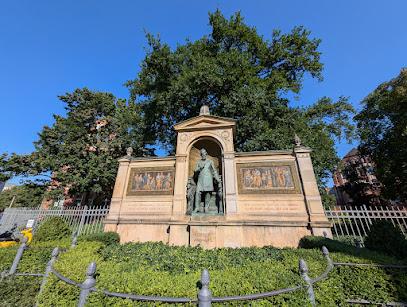
Rudolf Virchow Monument
0.1 km
Discover the Rudolf Virchow Monument in Berlin, a historical tribute that celebrates the legacy of a visionary in medicine and social reform amidst the city's vibrant culture.
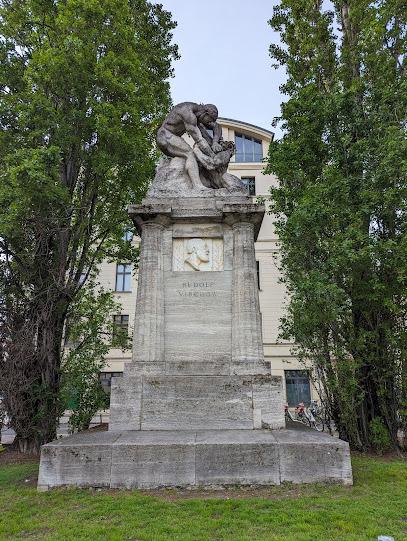
Alexanderufer
0.4 km
Discover the beauty and tranquility of Alexanderufer in Berlin, a perfect blend of history, culture, and stunning riverside views.

Schiffbauerdamm
0.5 km
Discover the cultural heart of Berlin at Schiffbauerdamm, where history meets vibrant entertainment and stunning waterfront views.

Konrad-Adenauer-Straße 1
0.5 km
Discover the stunning architecture and historical context of Konrad-Adenauer-Straße 1, a modern gem in the heart of Berlin's Mitte district.

Paul Loebe Building
0.5 km
Discover the striking Paul Löbe Building, a modern architectural gem in Berlin's political heart, showcasing the blend of design and democracy.

Mündung Südpanke
0.5 km
Discover the serene Mündung Südpanke in Berlin-Mitte, where the restored Südpanke River meets the Spree, offering a tranquil escape and a glimpse into the city's green heart.

Sandkrugbrücke
0.6 km
Explore the picturesque Sandkrugbrücke in Berlin's Mitte district, a charming bridge offering stunning views and a glimpse into the city's rich history.
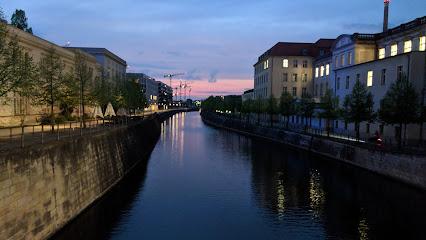
Jakob-Kaiser-Haus
0.6 km
Discover Jakob-Kaiser-Haus, a modern architectural gem in Berlin, symbolizing democracy and political heritage in the heart of Germany.

Platz d. Republik
0.6 km
Discover the political heart of Berlin at Platz d. Republik, home to the iconic Reichstag and a vibrant square filled with history and culture.

Friedrichstraße 107
0.6 km
Explore Friedrichstraße 107, a stunning architectural gem in Berlin's Mitte, embodying the city's rich history and vibrant modern culture.
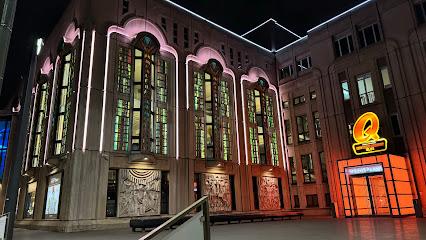
Verwaltung des Deutschen Bundestages
0.6 km
Discover the rich history and stunning architecture of the German Bundestag, a pivotal symbol of democracy in Berlin's vibrant Mitte district.

Friedrichstraße 205
0.7 km
Discover the architectural beauty and cultural vibrancy of Friedrichstraße 205, a historic landmark in the heart of Berlin's Mitte district.
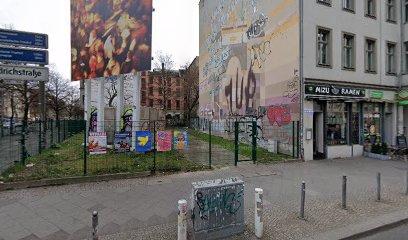
Memorial to Europe's Sinti and Roma Murdered Under Nazism
0.7 km
Explore the Memorial to Europe's Sinti and Roma in Berlin, a poignant reminder of resilience against the atrocities of the past.
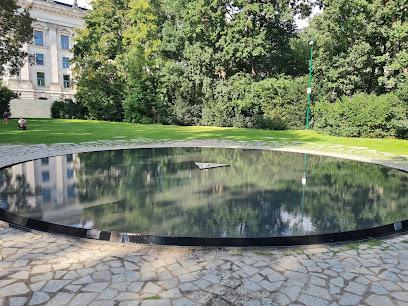
Bundeskanzleramt Berlin
0.8 km
Explore the Bundeskanzleramt in Berlin, a modern architectural marvel symbolizing Germany's reunification and transparent governance, set within the vibrant government district.
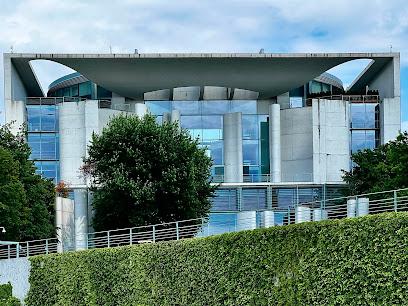
Unmissable attractions to see
Veterinary Anatomy Theater
0.2 km
Explore the Veterinary Anatomy Theater in Berlin, a historical gem showcasing the fascinating world of veterinary science and animal anatomy.
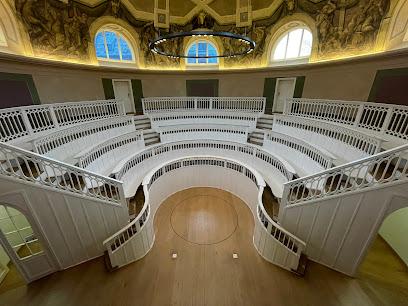
Kronprinzenbrücke
0.3 km
Explore the historic Kronprinzenbrücke in Berlin, where stunning architecture meets breathtaking views along the Spree River.

Parlament der Bäume
0.3 km
Discover the serenity of Parlament der Bäume, a memorial park in Berlin dedicated to nature, reflection, and artistic expression.
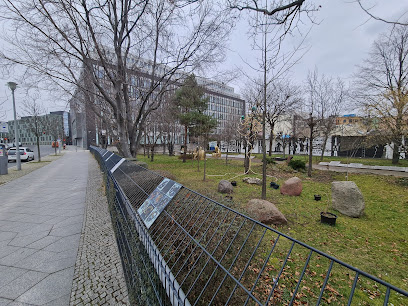
Boros Foundation
0.3 km
Explore the Boros Foundation in Berlin, where contemporary art meets history in a converted WWII bunker, showcasing a stunning collection of modern masterpieces.

Futurium
0.3 km
Explore the Futurium in Berlin: A museum dedicated to innovative ideas and the future of humanity, featuring interactive exhibits and thought-provoking installations.

Anlegestelle Paul-Löbe-Haus/ Reichstag
0.3 km
Experience Berlin's political heritage at Anlegestelle Paul-Löbe-Haus, offering stunning views of the Reichstag and vibrant riverfront activities.

Berlin Museum of Medical History of the Charité
0.4 km
Dive into the rich history of medicine at the Berlin Museum of Medical History, where the past meets the present in an engaging exploration of healthcare evolution.

Marie-Elisabeth-Lüders-Haus
0.4 km
Explore the Marie-Elisabeth-Lüders-Haus, a modern architectural gem and a window into Germany's democratic heart, set against the picturesque Spree River.

Stolperstein Tichauer
0.4 km
Discover the Stolperstein Tichauer in Berlin, a poignant memorial honoring Holocaust victims with brass plaques that tell their stories.

White Crosses
0.5 km
Visit the White Crosses Memorial in Berlin, a serene tribute to those lost during the division of Germany, and reflect on the poignant history it represents.
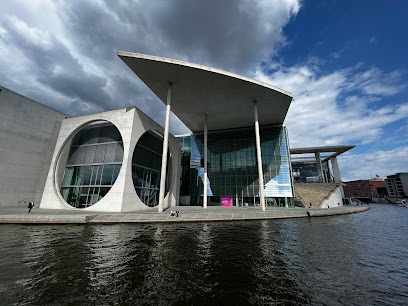
Tausend
0.5 km
Discover the chic ambiance and innovative cocktails at Tausend, a hidden bar and restaurant gem in Berlin's vibrant Mitte district.

Robert-Koch-Platz
0.5 km
Explore the tranquil beauty of Robert-Koch-Platz, a historic park in the heart of Berlin's Mitte, perfect for relaxation and cultural exploration.
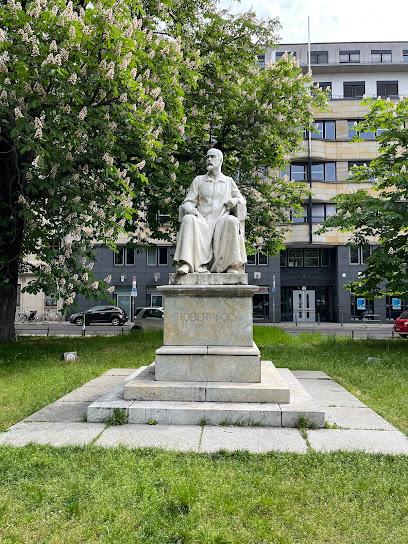
Berliner Ensemble
0.5 km
Discover the Berliner Ensemble, a historic performing arts theater in Berlin, celebrating the legacy of Bertolt Brecht through innovative and powerful performances.

Marschall Bridge
0.5 km
Explore Marschall Bridge in Berlin, a stunning architectural marvel connecting history and modernity with breathtaking views of the city.
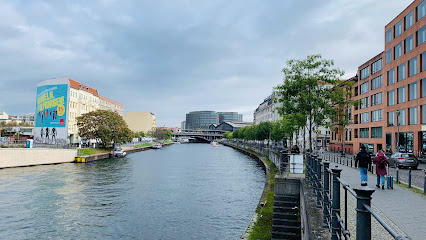
Theater am Schiffbauerdamm
0.5 km
Discover the enchanting performances and rich history of Theater am Schiffbauerdamm, a must-visit cultural landmark in Berlin's vibrant arts scene.
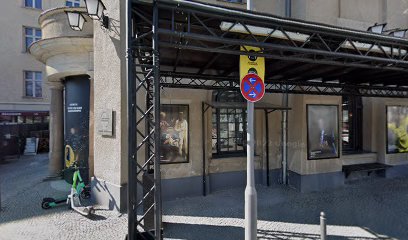
Essential places to dine
Berliner Republik
0.5 km
Discover Berliner Republik: A Culinary Haven in Berlin's Mitte District Offering Authentic German Cuisine and Lively Atmosphere.
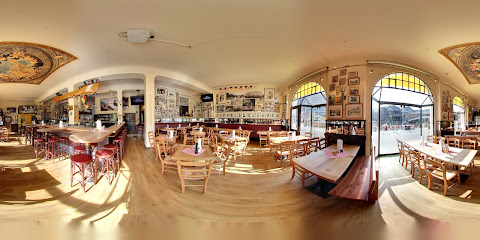
Pantry
0.6 km
Discover an eclectic dining experience at Pantry in Berlin - where fusion cuisine meets elegance in the heart of Mitte.

Grill Royal
0.7 km
Experience exceptional steaks and vibrant ambiance at Grill Royal in Berlin’s Mitte district.

Schnitzelei Mitte
0.8 km
Experience authentic German cuisine at Schnitzelei Mitte, featuring exquisite schnitzels and tapas in Berlin's lively Mitte district.

Lorenz Adlon Esszimmer
0.8 km
Experience unparalleled fine dining at Lorenz Adlon Esszimmer in Berlin – where modern European cuisine meets historic elegance.
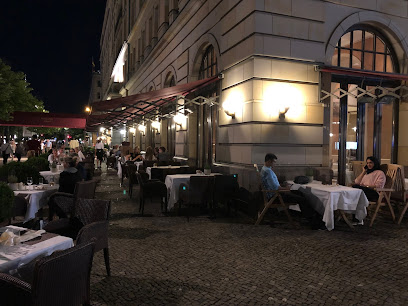
acht&dreissig
0.9 km
Savor traditional German dishes at acht&dreissig in Berlin, where authentic flavors meet inviting ambiance.
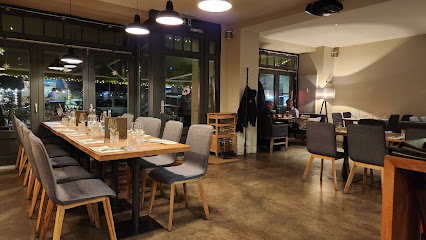
Friedel Richter Restaurant
1.0 km
Experience modern German cuisine at Friedel Richter Restaurant in Berlin's Mitte district – where tradition meets innovation.

Nante-Eck
1.0 km
Experience authentic German cuisine at Nante-Eck in Berlin’s Mitte district—where tradition meets taste in a cozy atmosphere.

MontRaw Restaurant
1.1 km
Experience authentic Mediterranean cuisine in Berlin's Mitte district at MontRaw Restaurant - where every dish tells a story.

Salamat
1.1 km
Discover authentic Middle Eastern flavors at Salamat in Berlin's Mitte district – where every dish tells a story.
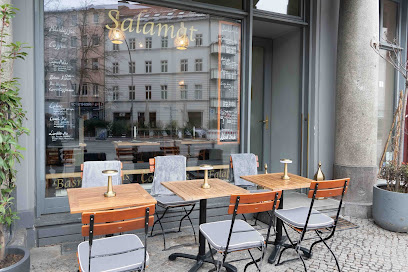
Bocca di Bacco
1.2 km
Experience authentic Italian cuisine at Bocca di Bacco in Berlin – where tradition meets elegance in every dish.

Charlotte & Fritz
1.2 km
Experience the pinnacle of fine dining at Charlotte & Fritz, where exquisite flavors meet elegant ambiance in Berlin's Mitte district.

Restaurant Esszimmer
1.2 km
Savor authentic German cuisine in a cozy atmosphere at Restaurant Esszimmer - a must-visit dining destination in Berlin.

Bandol sur mer
1.3 km
Experience the exquisite flavors and breathtaking scenery of Bandol sur Mer on your next visit to the French Riviera.

Katz Orange
1.4 km
Discover Katz Orange: An eclectic fine dining experience in Berlin's Mitte district offering exquisite German cuisine and an inviting atmosphere.

Markets, malls and hidden boutiques
BERLIN STORE
0.9 km
Discover unique souvenirs and local crafts at the Berlin Store, the perfect stop for tourists seeking a piece of the city's vibrant culture.
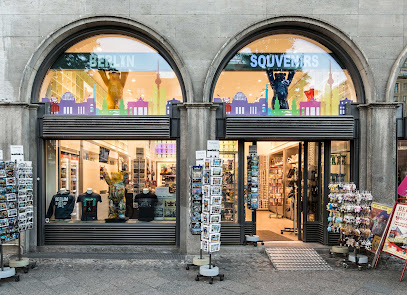
Galeries Lafayette
1.3 km
Discover the allure of luxury shopping and gourmet dining at Galeries Lafayette in the heart of Berlin, a must-visit for every traveler.
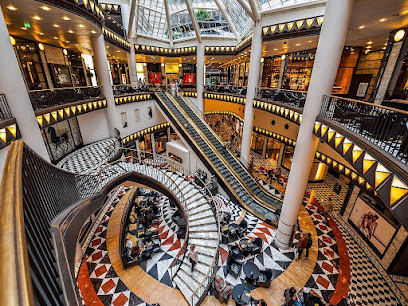
Wolford Boutique Berlin
1.3 km
Experience luxury and elegance at Wolford Boutique Berlin, your go-to destination for exquisite women's fashion and lingerie.

The Square Berlin East
1.3 km
Explore a unique blend of fashion, literature, and home decor at The Square Berlin East, a boutique gem in the heart of Berlin's Mitte district.

Mall of Berlin
1.5 km
Explore the Mall of Berlin: A shopping haven in the heart of the city with endless retail, dining, and entertainment options.
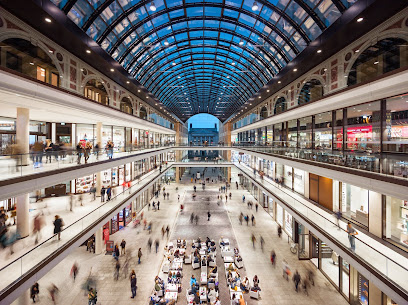
Fashionfouvintage
1.5 km
Explore Fashionfouvintage in Berlin for a unique vintage clothing experience, showcasing timeless styles from various eras that inspire and delight.

AMPELMANN shop in the Hackescher Markt
1.5 km
Explore the charming AMPELMANN shop in Hackescher Markt for unique Berlin souvenirs that capture the city's spirit and culture.
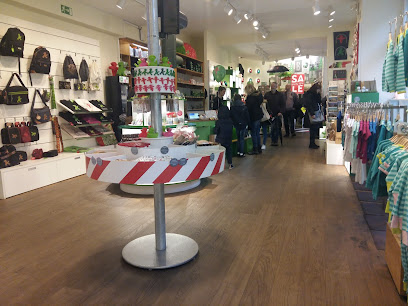
I love Berlin
1.5 km
Explore 'I Love Berlin' for unique souvenirs and gifts that embody the vibrant culture and spirit of Berlin, located in the heart of the city.

Hackesche Höfe
1.6 km
Explore Hackesche Höfe, a vibrant shopping and cultural hub in Berlin, featuring unique shops, diverse dining options, and artistic experiences.

Kauf Dich Glücklich Mode
1.7 km
Discover unique fashion at Kauf Dich Glücklich Mode, a stylish clothing store in Berlin's Mitte district, where creativity meets contemporary style.

Shop Passage im Humboldt Forum
1.7 km
Explore a captivating selection of gifts and unique souvenirs at Shop Passage im Humboldt Forum, a must-visit destination in Berlin.
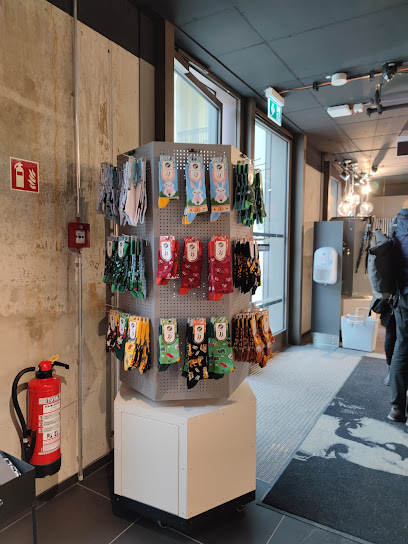
Redbear Berlin
1.7 km
Explore Redbear Berlin, a stylish boutique offering unique fashion pieces in the vibrant Mitte district, perfect for discerning shoppers.

Rotation Boutique / Nachhaltige Mode / Schallplatten
1.7 km
Discover the intersection of sustainable fashion and music at Rotation Boutique in Berlin's Mitte district, where style meets eco-consciousness.

A Kind of Guise Store
1.8 km
Explore A Kind of Guise Store in Berlin for unique, high-quality clothing that blends contemporary style with sustainable practices.

RAU Berlin Boutique
1.8 km
Explore the unique fashion offerings at RAU Berlin Boutique, the perfect blend of contemporary style and local craftsmanship in the heart of Berlin.
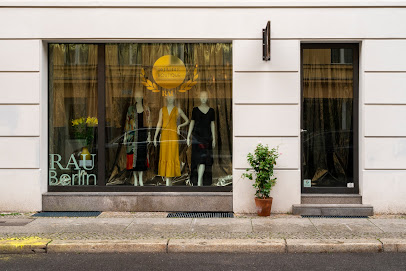
Essential bars & hidden hideouts
Melody Nelson bar
0.6 km
Discover the vibrant atmosphere of Melody Nelson, Berlin's chic bistro and cocktail bar, perfect for unwinding and socializing.

meisterschueler
0.7 km
Discover Meisterschueler in Berlin – a captivating cocktail bar that intertwines art and mixology for an unforgettable experience.
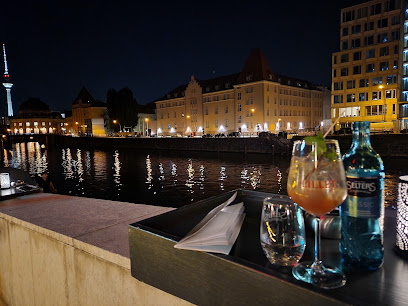
Windhorst
0.8 km
Experience Berlin's vibrant nightlife at Windhorst, an upscale cocktail bar serving exquisite drinks in a stylish atmosphere in the heart of Mitte.

Bar Amélie
0.8 km
Discover Berlin's vibrant cocktail scene at Bar Amélie, where expertly crafted drinks meet a cozy atmosphere in the heart of the city.

Reingold
0.8 km
Experience the vibrant nightlife of Berlin at Reingold, a cocktail bar in Mitte known for its expertly crafted drinks and lively atmosphere.

X-Terrain
0.8 km
Discover the eclectic vibe of X-Terrain, a unique bar in Berlin's Mitte with creative cocktails and a lively atmosphere perfect for nightlife enthusiasts.

My Bar ICI
1.3 km
Discover the vibrant atmosphere and exquisite drink selection at My Bar ICI, a must-visit bar in the heart of Berlin's Mitte district.

TheCoven Bar
1.4 km
Discover the allure of TheCoven Bar, a cocktail haven in the heart of Berlin's Mitte district, where innovative drinks meet enchanting ambiance.

Newton Bar
1.4 km
Experience the vibrant nightlife of Berlin at Newton Bar, where stylish cocktails and a chic atmosphere await in Mitte.
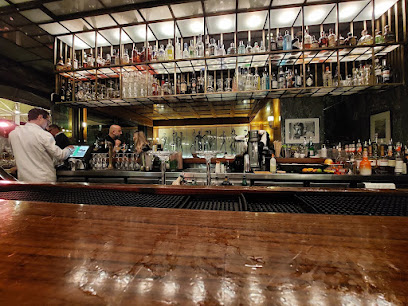
The Curtain Club
1.5 km
Experience elegance at The Curtain Club, Berlin's premier bar with exquisite cocktails and a chic atmosphere in the heart of Potsdamer Platz.

BrewDog Berlin Mitte
1.5 km
Discover the vibrant atmosphere and diverse craft beer selection at BrewDog Berlin Mitte, where every sip tells a story.

BonBon Bar Berlin
1.5 km
Discover the lively ambiance and eclectic cocktails at BonBon Bar, a must-visit for an unforgettable night out in Berlin's vibrant Mitte district.

Sharlie Cheen Bar
1.6 km
Discover Sharlie Cheen Bar: A lively Berlin hotspot known for its innovative cocktails and vibrant nightlife experience in the heart of Mitte.

Mein Haus am See
1.6 km
Experience the vibrant fusion of bar, cafe, and nightlife at Mein Haus am See in Berlin's Mitte district, a perfect spot for relaxation and entertainment.
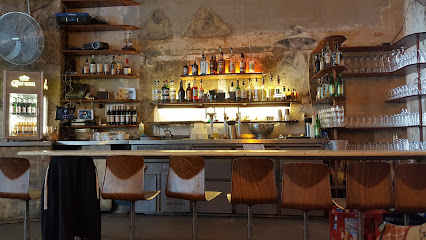
Buck and Breck
1.6 km
Discover Buck and Breck, a stylish cocktail bar in Berlin's Mitte district, where expertly crafted drinks and a cozy atmosphere await.




